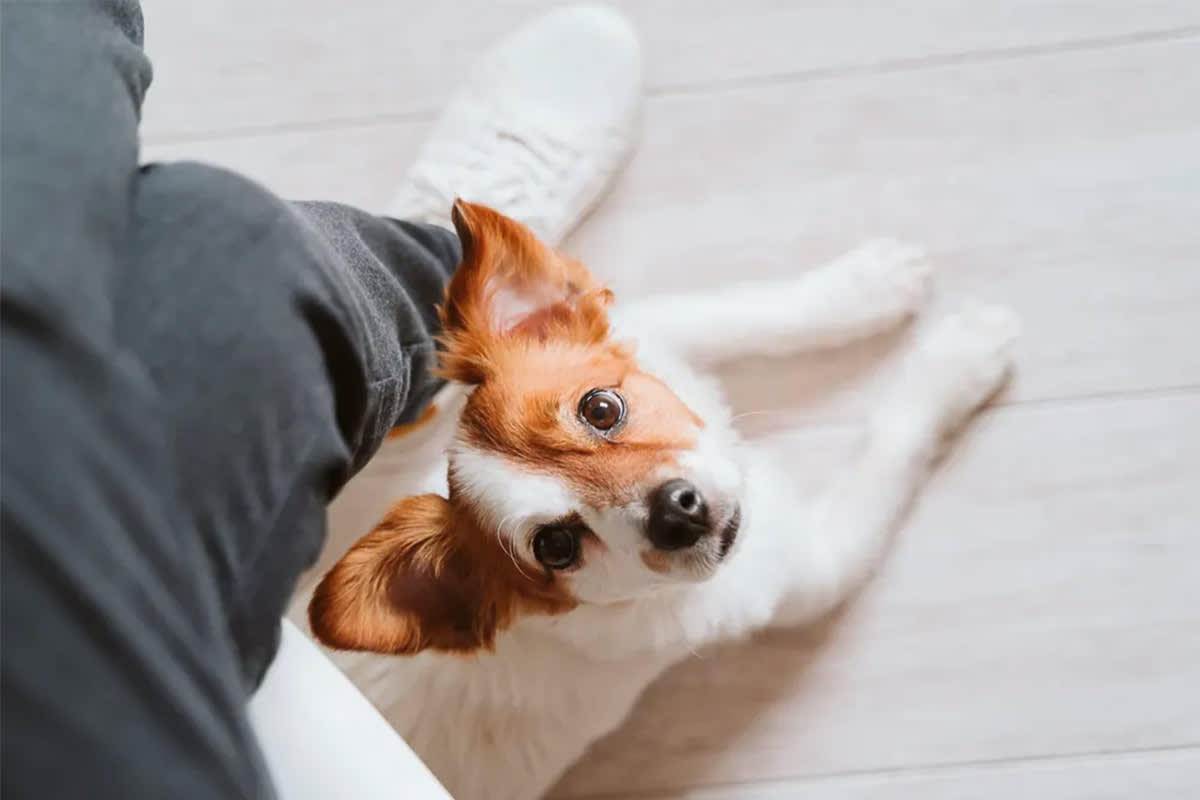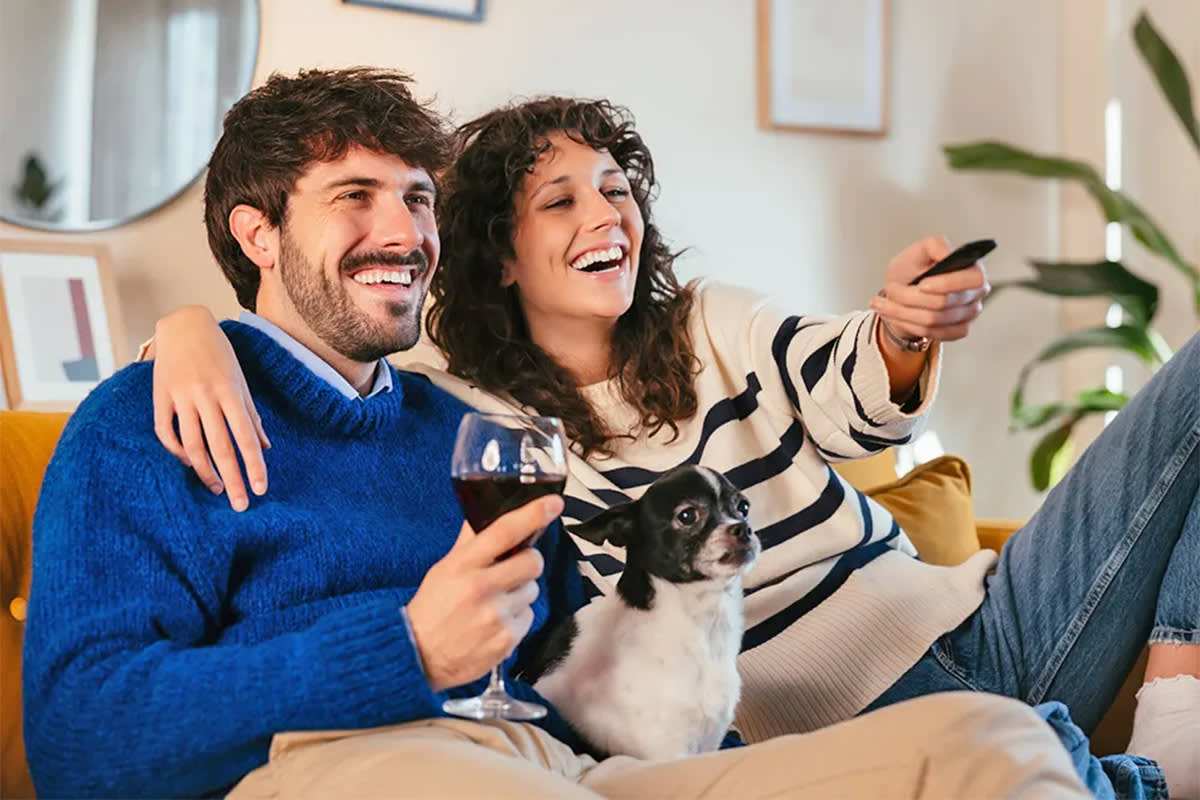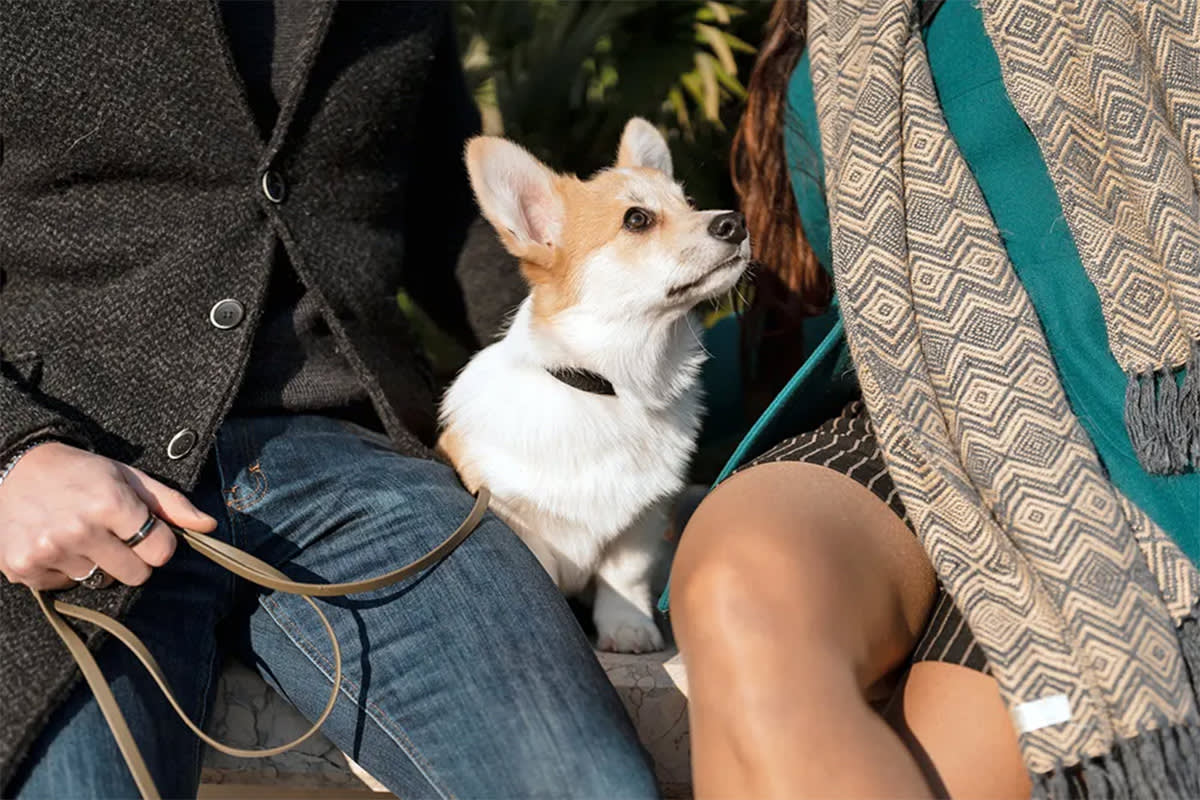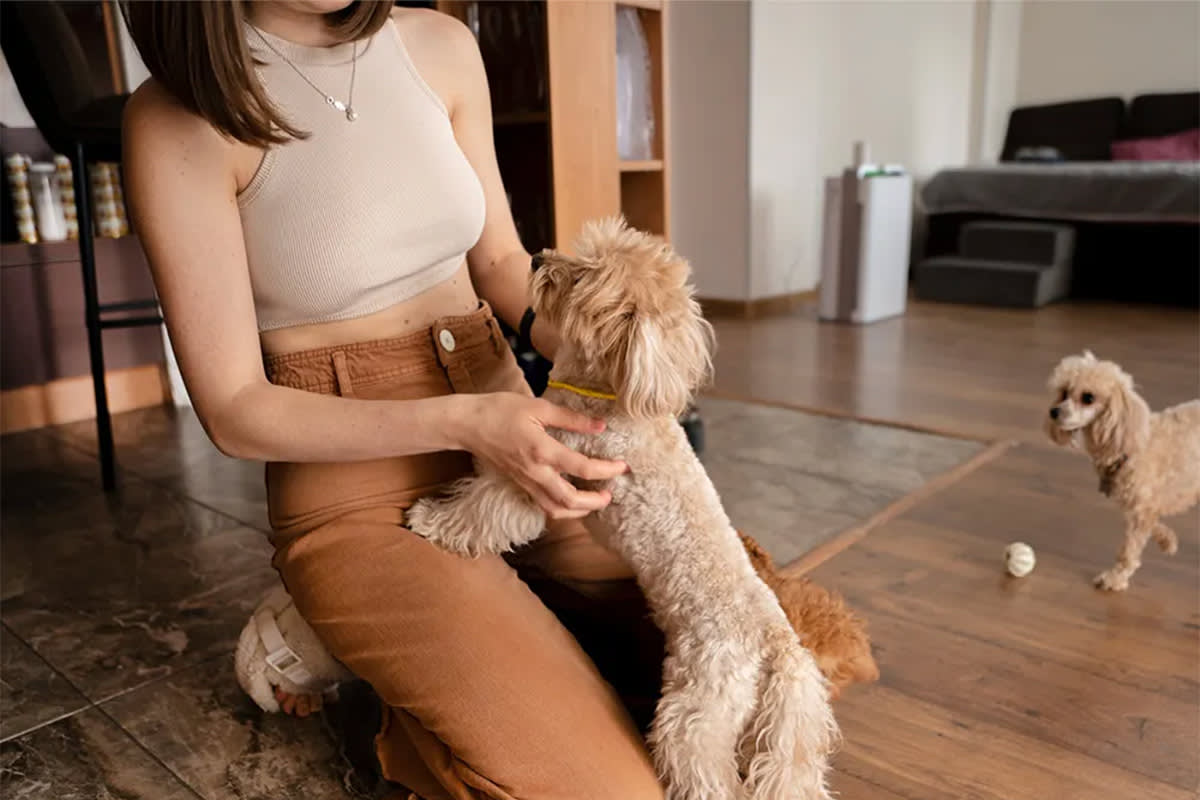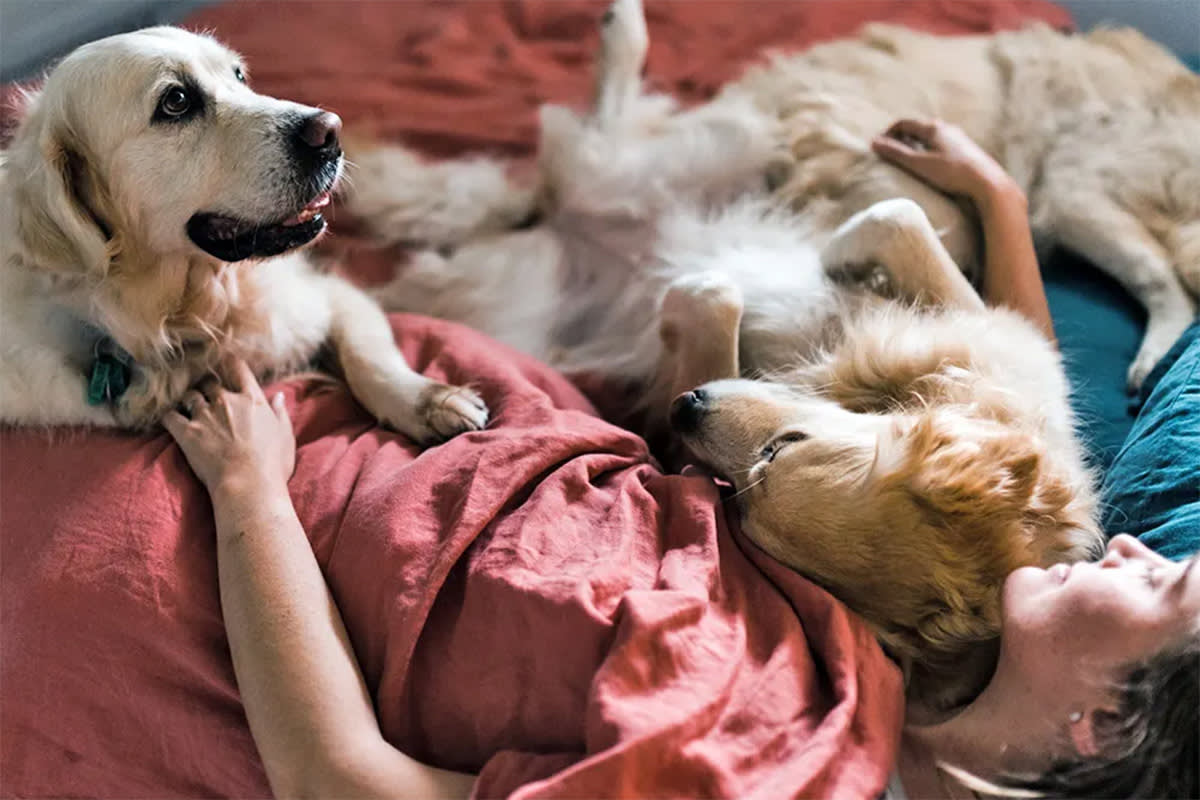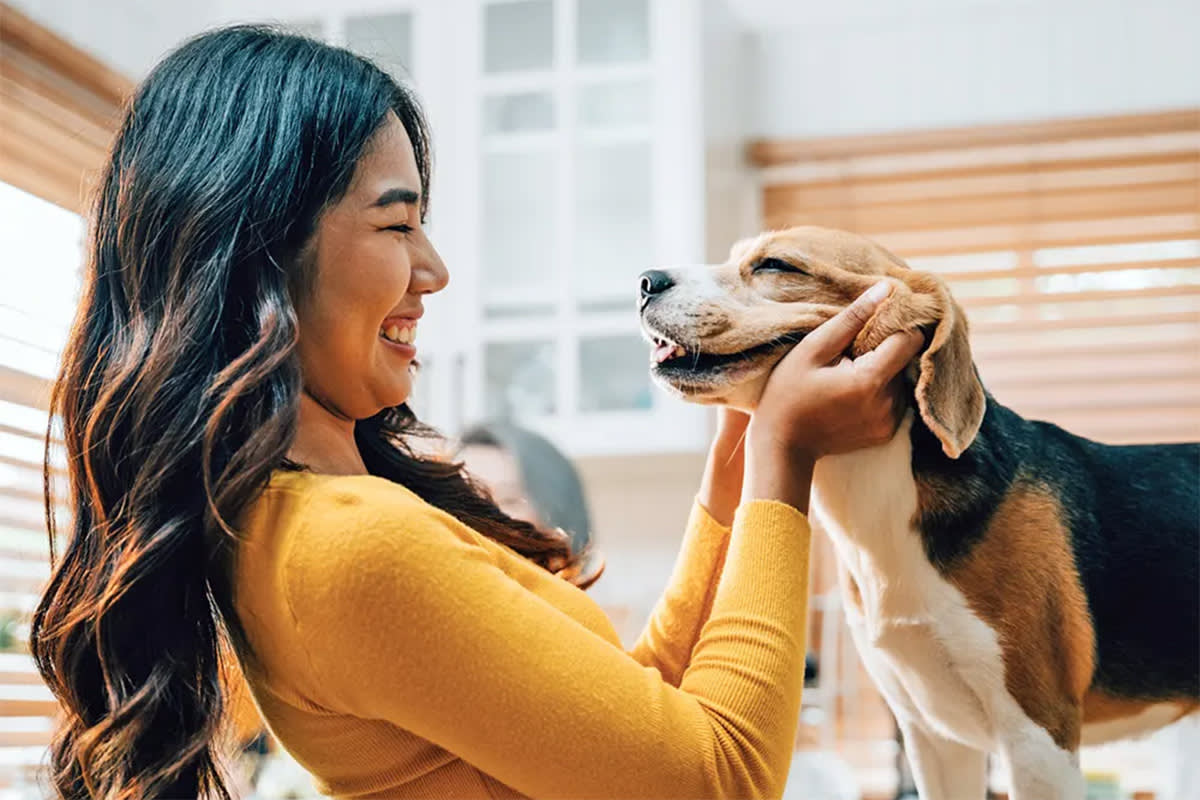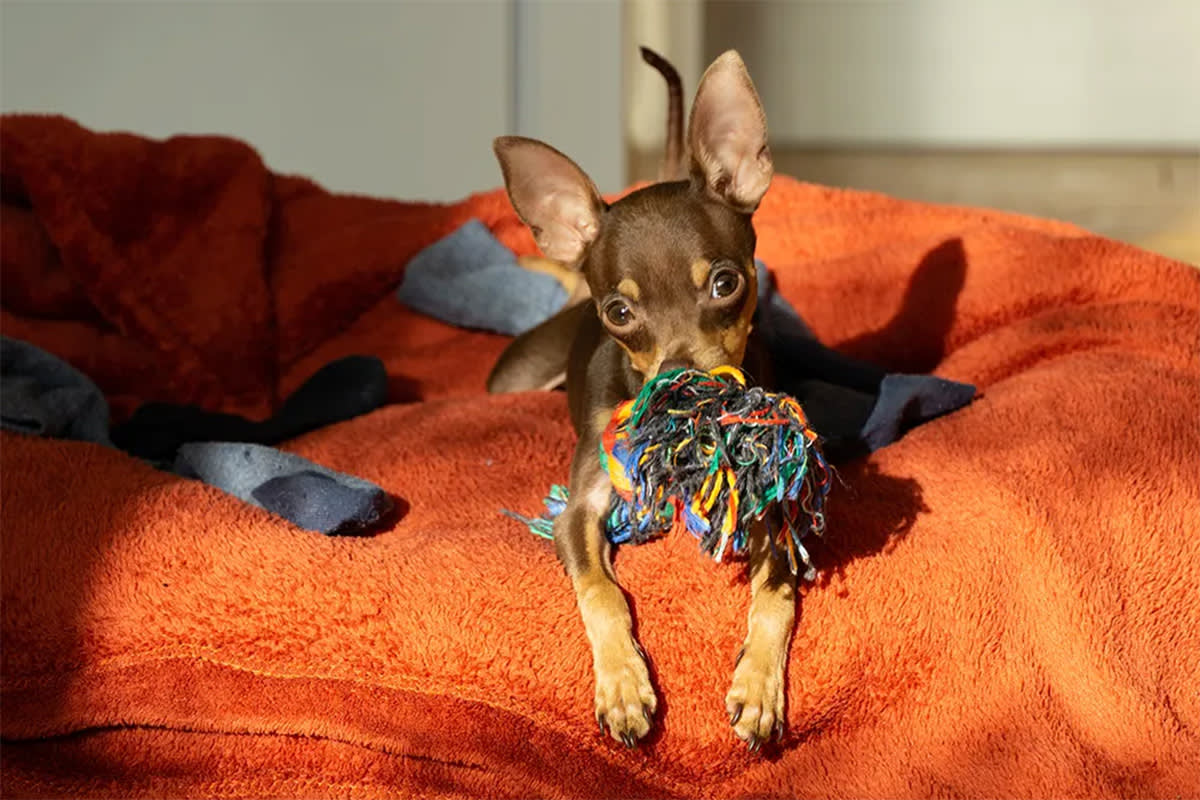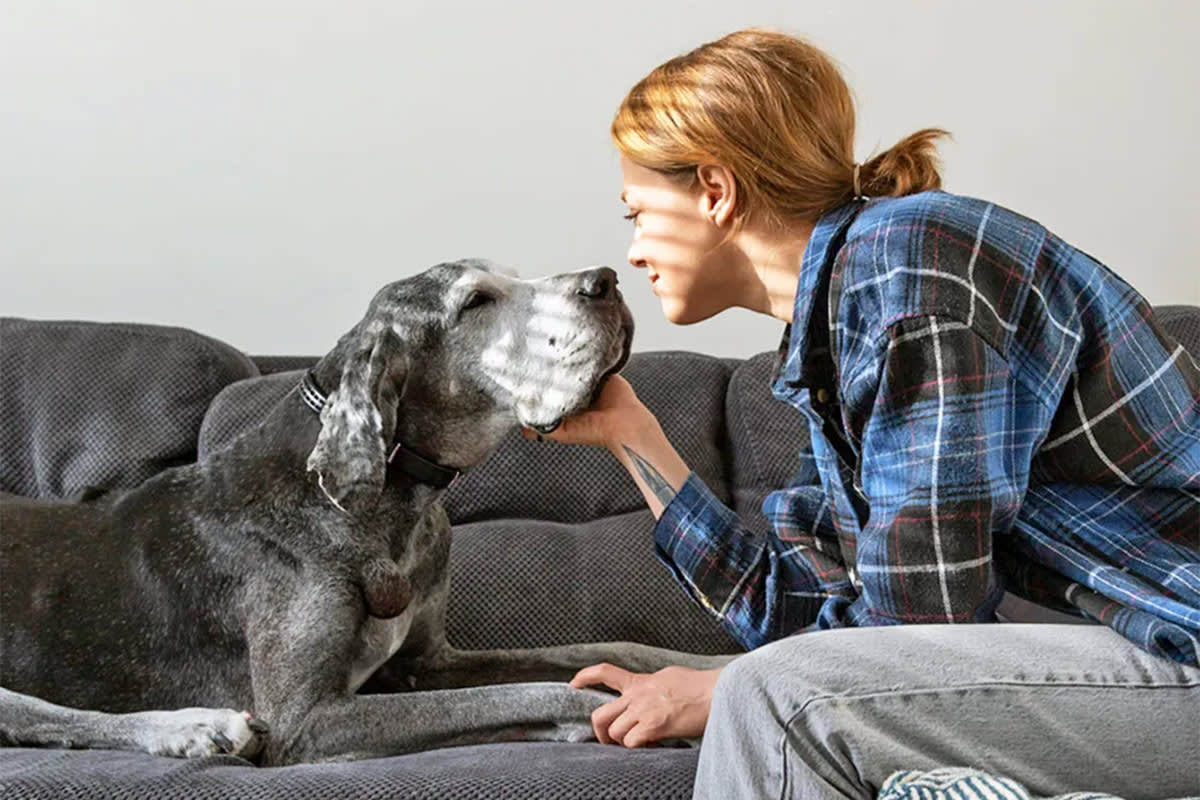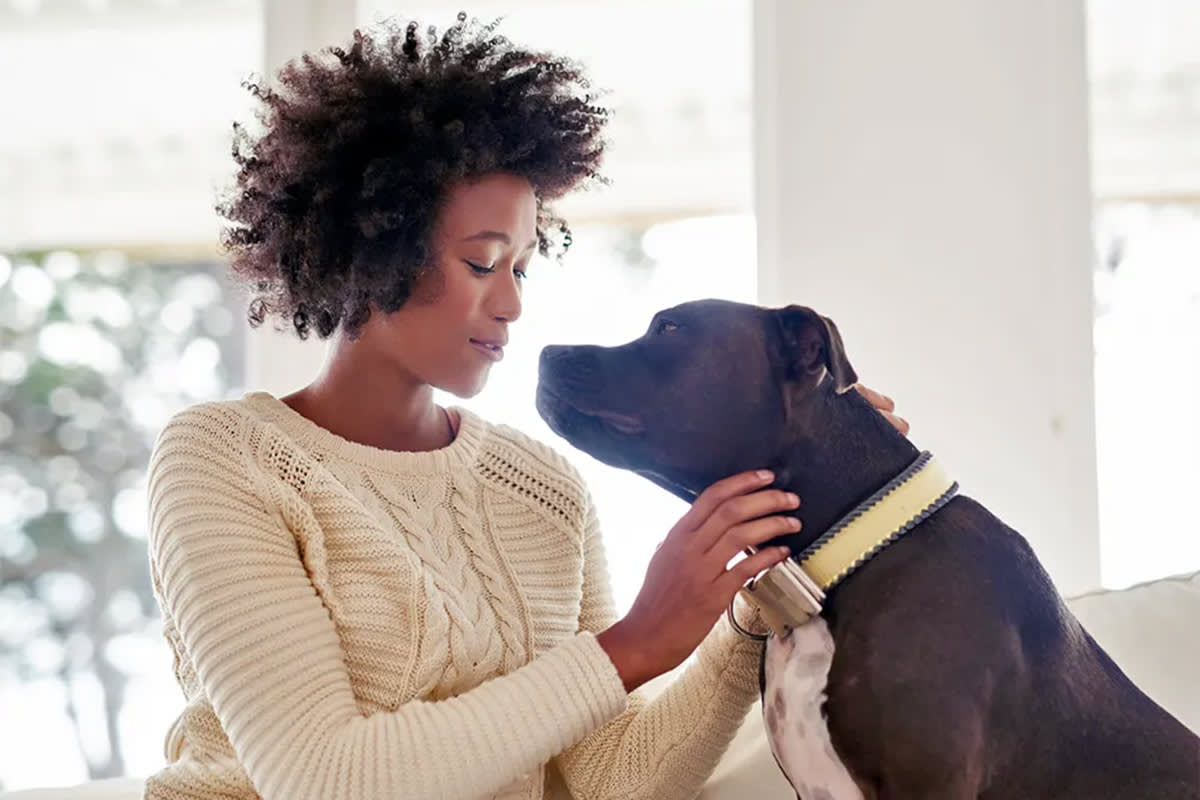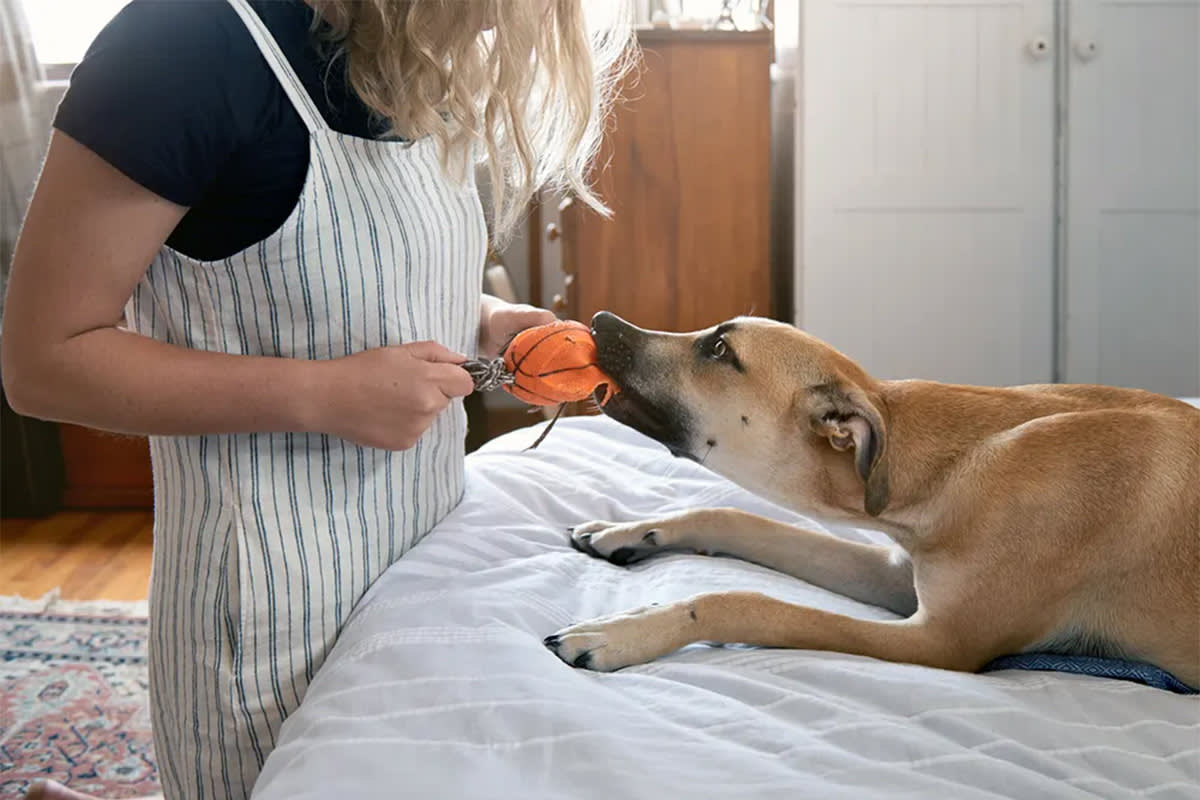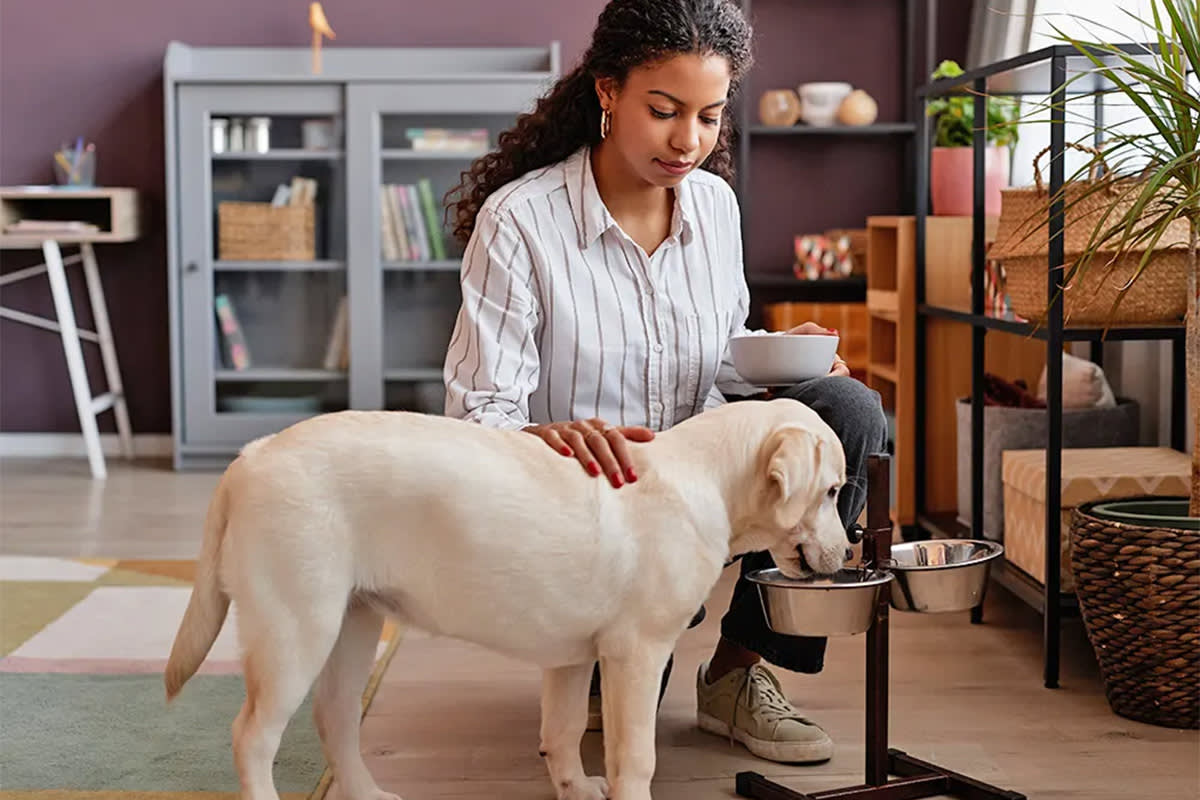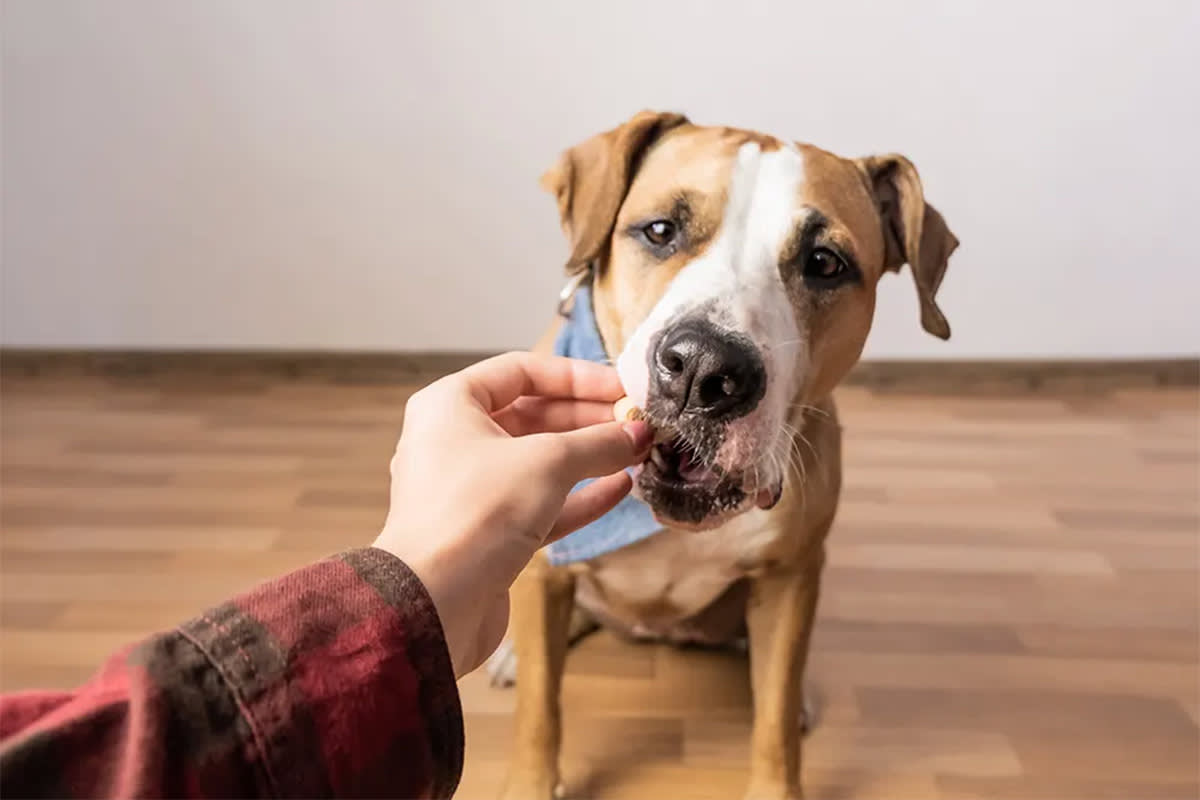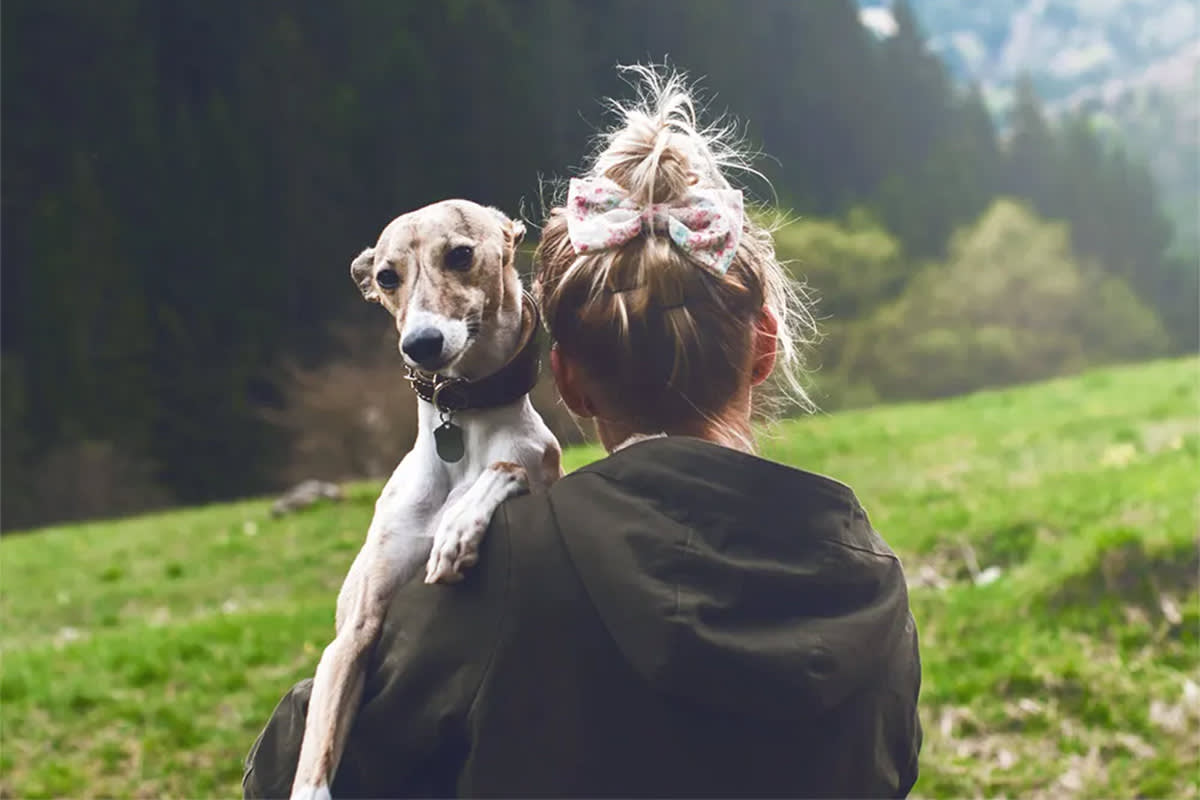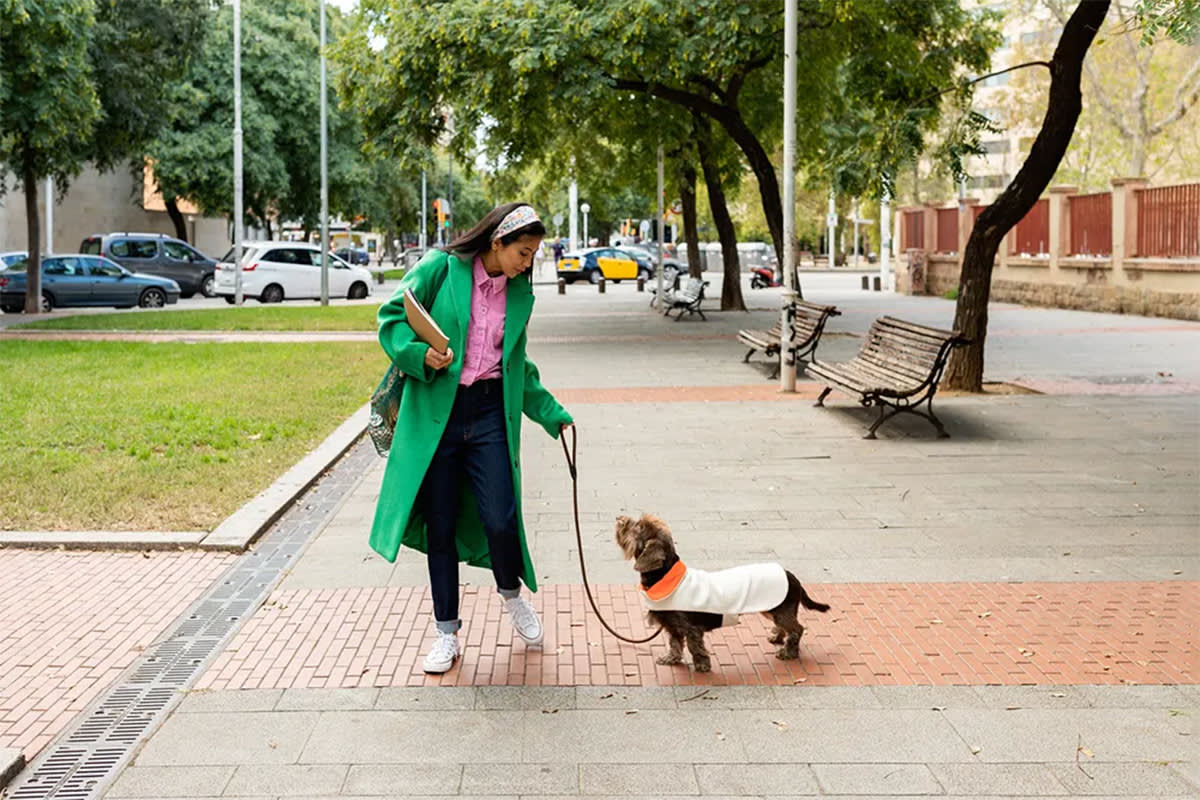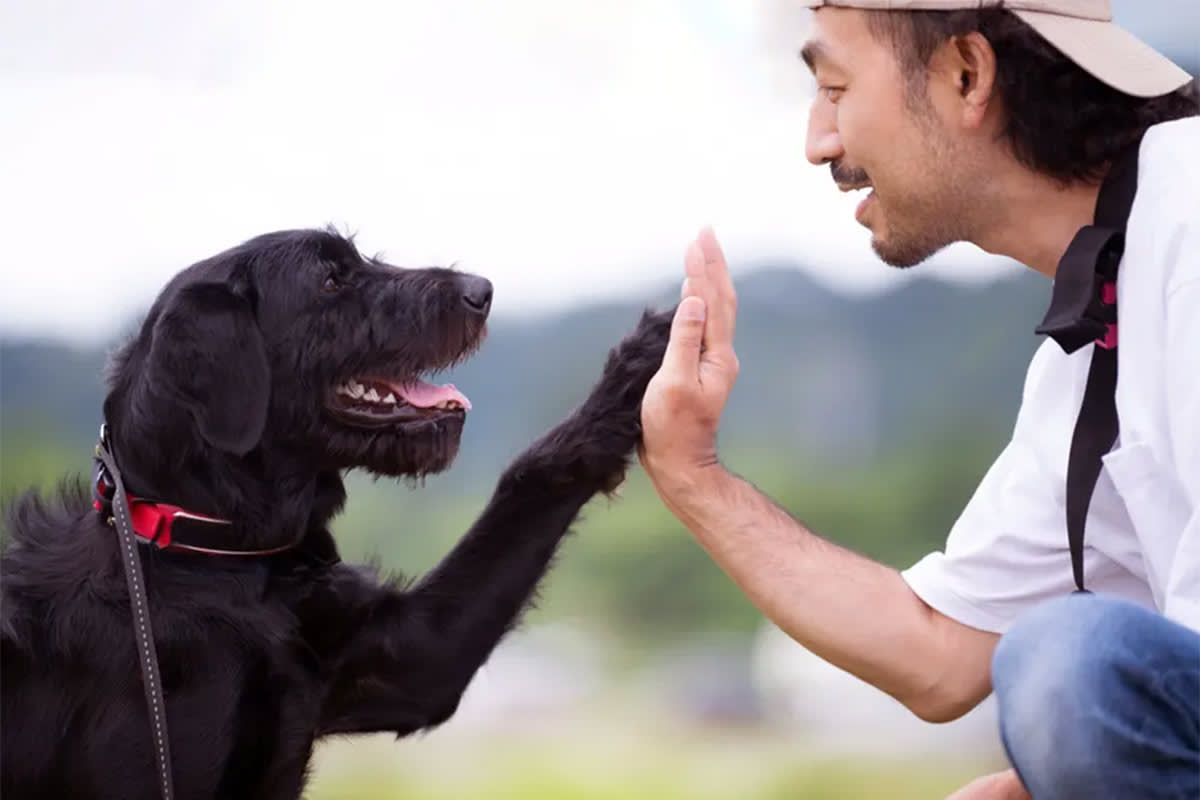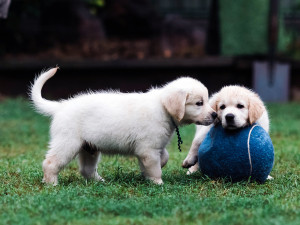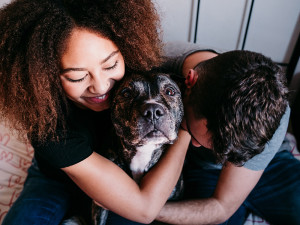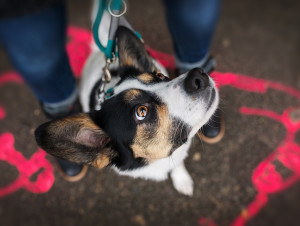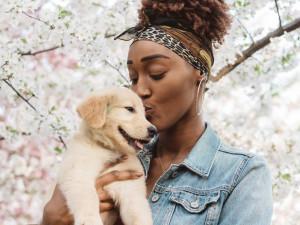How to Know if Your Dog Has Imprinted on You
If they’re following you around like your shadow, there’s a reason for that.
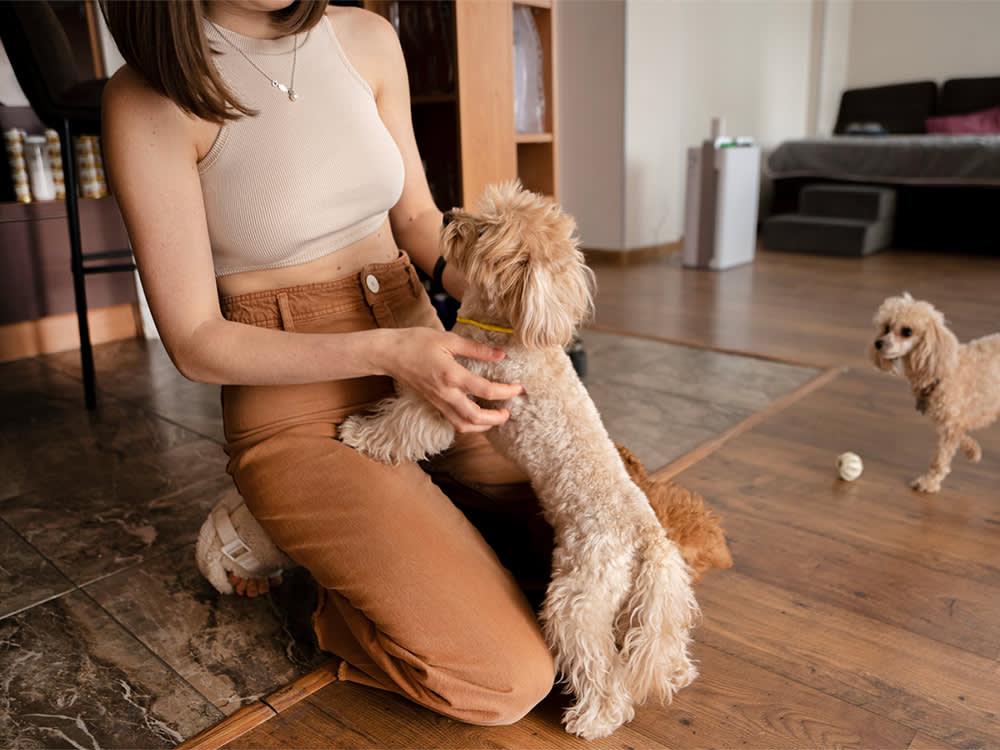
Share Article
In This Article:
What Does It Mean When a Dog Imprints? 10 Signs Your Dog Has Imprinted on You Can Dogs Imprint on Humans? Can Your Dog Be Too Attached to You? The Three Stages of Puppy Imprinting At What Age Do Dogs Stop Imprinting? Common Dog Imprinting Behaviors How to Bond With Your Dog
Does your dog only have eyes for you? Do they look to you for guidance more than they do other members of the family? This may be a sign that your dog has imprinted on you, making you their most trusted human.
You’ve likely heard of geese or ducks imprinting on humans. Some species, like many birds, cows, and horses, tend to imprint on the first thing they see after hatching or being born. They rely on this person or animal to keep them safe and teach them the ways of the world. But dogs are a little bit different.
Rather than imprint on the first thing they see, they tend to learn about their environment from their mother, littermates, and any humans or other animals that are around. Imprinting, or bonding, occurs when they develop a trusting, dependent, and close attachment to a human or other animal. It often happens at a young age but can occur at various stages in life.
There are many signs that can show your dog has imprinted on you. A bonded dog seeks your company, maintains eye contact, follows you, relaxes in your presence, and responds eagerly to your return. Their body language — relaxed posture, soft eyes, and a wagging tail — signals they view you as their trusted person and secure base. Read on to learn how to know if a dog has imprinted on you and what exactly that means, as well as how to strengthen the bond with your dog.

How do I know if my dog loves me?
There are a variety of ways that your dog may show that they have bonded with you and love you. Dogs who love their pet parents show relaxed body language while around them; sometimes, this means rolling over to expose their belly.
It may sound obvious, but a dog who loves you will want to be near you: Lying down on top of you or leaning on you is an indication that they feel more secure by your side. If your pup is following your every step, that’s a good sign, too.
Below are the top 10 signs your dog has imprinted on you.
10 signs your dog has imprinted on you
You may have a feeling that your dog has put you on a pedestal. But if you want to know for sure that your dog loves you, here are 10 things your dog may do after imprinting on you.
Following you around: Why does my dog follow me everywhere?
If you have a little shadow, this likely means your dog trusts and loves you deeply. You make them feel safe and cared for. It might be annoying that they are trailing you just about everywhere you go — but you’re their person, and that has to feel good.
Mirroring your behaviors: Why does my dog mirror me?
A study published in 2017 by researchers in Austriaopens in new tab found that dogs are sensitive to their parents’ emotional states. They can pick up those feelings over time and begin to mirror their humans’ behavior.
Listening to your cues: Why does my dog listen to me but not others?
If you are the only one who has practiced training with your dog, you will likely be the only person your dog listens to. This is why it’s important for all family members — if you do not live alone — to participate in training, so there is consistency in your dog’s behavior. Otherwise, your dog may learn to only respect your commands and not others’ commands.
Checking in: Why is my dog always “checking in” with me?
If your dog is constantly checking in with you, they are probably emotionally attached to you. They feel safe and secure when they are near you and know where you are. Some dogs even like to stay in physical contact with you, leaning on youopens in new tab to show their support and admiration.
Seeking you out: Why does my dog always want to be near me?
Your dog wants to be near you because you provide comfort and safety to them. It could also be that they are trying to communicate something to youopens in new tab. They may be hungry or want to go for a walk.
Maintaining eye contact: Why does my dog look me in the eye?
Your dog stares soulfully into your eyes because they love you. In fact, staring into each other’s eyes releases oxytocin (aka the love hormone) in both humans and dogs, making both of you feel good.
Cuddling your belongings: Why does my dog enjoy laying in my laundry?
The primary reason your pup is obsessed with your laundry basket (and its contents) is because your clothes smell like you. It’s comforting and makes them feel safe to be surrounded by your scent. This is another sign that they want to be close to you.
Reading your emotions: How does my dog know when I’m upset?
Dogs are pretty amazing creatures — they can use all of their senses to understand how we’re feeling. Research showsopens in new tab they can recognize humans’ emotions in our facial expressions. Because your dog can sense your emotions, they can probably pick up on cues when you are craving their attention.
Taking care of you: Why does my dog know when I need attention?
Dogs may show care for you in a variety of ways. Their strong sense of smell means they often know when you’re sick — and if you tend to get extra cuddles when you’re under the weather, that’s a good sign that they’re trying to help.
Playing: Why does my dog always want to play?
A playful dog is a happy dog. If a dog wants lots of playtime with you, they probably see you as their buddy, and they trust you to be a patient and safe play partner.
How to bond with a new dog
Being a dog parent means more than just providing your pup with food, water, and shelter. Bonding with your dog comes down to spending quality time with them. This means exercising, playing, and training them.
1. Establish a routine.
Dogs thrive when they have a routine. It can help reduce anxiety and give them a greater sense of security to know what to expect each day. Be sure to incorporate exercise into your dog’s routine; take them for walks for at least 30 minutes a day. Try to feed them around the same time each day.
2. Use positive reinforcement.
Most dogs love to learn things, so teaching them obedience cues and tricks is a great way to help them see that you make a great companion. Always use positive reinforcementopens in new tab when training, and never punish your dog. Punishing them can create fear and anxiety, which you don’t want associated with you.
3. Spend quality time with them.
Play games that stimulate their mind and associate you with good times. Interactive games like tug-of-war or fetch are great options because they require close interaction with you. Of course, quality time can also mean a quiet petting session. It doesn’t always have to involve activity.
4. Respect their boundaries.
Just like humans, dogs are more likely to bond with people who respect their boundaries. Make sure they always have a place where they can relax alone, and don’t force affection onto them (sorry, but most dogs actually don’t like being huggedopens in new tab).
5. Use patience and consistency.
You should always behave this way with your dog, whether you’re training or engaging in everyday playtime. Pets are sometimes imperfect, and a little understanding goes a long way to helping your dog feel secure.
References
Albuquerque, Natalia and Briseida Resende. “Dogs functionally respond to and use emotional information from human expressions.” Evolutionary Human Sciences. 6 Dec 2022. https://pmc.ncbi.nlm.nih.gov/articles/PMC10426098/opens in new tab.
“Dogs Imprinting on Humans: What You Need to Know.” Ridgeside K9. https://ridgesidek9nc.com/dog-tips/dogs-imprinting-on-humans/opens in new tab.
“Positive Reinforcement Training.” The Humane Society of the United States. https://www.humanesociety.org/resources/positive-reinforcement-trainingopens in new tab.

Dr. Chyrle Bonk, DVM
Dr. Chyrle Bonk has been a mixed-animal veterinarian since 2010, with a special interest in rehabilitation. When she's not practicing or writing about veterinary medicine, you may find her exploring the outdoors with her family or tending to her cows, horses, chickens, or cats and dogs.

Kate Sheofsky
Kate Sheofsky hails from San Francisco, where she developed a love of writing, Giants baseball, and houses she can’t afford. She currently lives in Portland, OR, and works as a freelance writer and content strategist. When not typing away on her laptop, she enjoys tooling around the city with her two rescue pups searching for tasty food and sunny patios.
Related articles
![Two Golden Retriever puppies playing with a large blue tennis ball outside in the grass]()
What to Expect at Puppy Socialization Classes
A dog behaviorist schools us on why puppy classes are more about socializing than getting straight As.
![Three dogs on leashes meeting and sniffing each other on a walk on the summer grass with owners]()
How Do I Get My Shy Dog To Socialize?
Kinship Collective dog trainer Robert Haussmann’s tips for getting a shy pup to go from wallflower to social butterfly.
![Couple hugs their merle Boxer]()
How to Improve Your Relationship with Your Dog
Animal behaviorist Dr. Karen B. London on how to strengthen your pet-parent bond.
![Dog on leash sitting on a colorful street and looking attentive at their pet parent]()
How to Get Your Dog to Pay Attention to You
Here are some simple steps to pry your pup away from that one spot in the yard they’re obsessed with.
![woman draped in an orange blanket holds a black-and-white puppy]()
5 Development Stages You Should Know When You Get a Puppy
It’s like What to Expect When You’re Expecting, except add “four little paws to run around your house” to the title.

